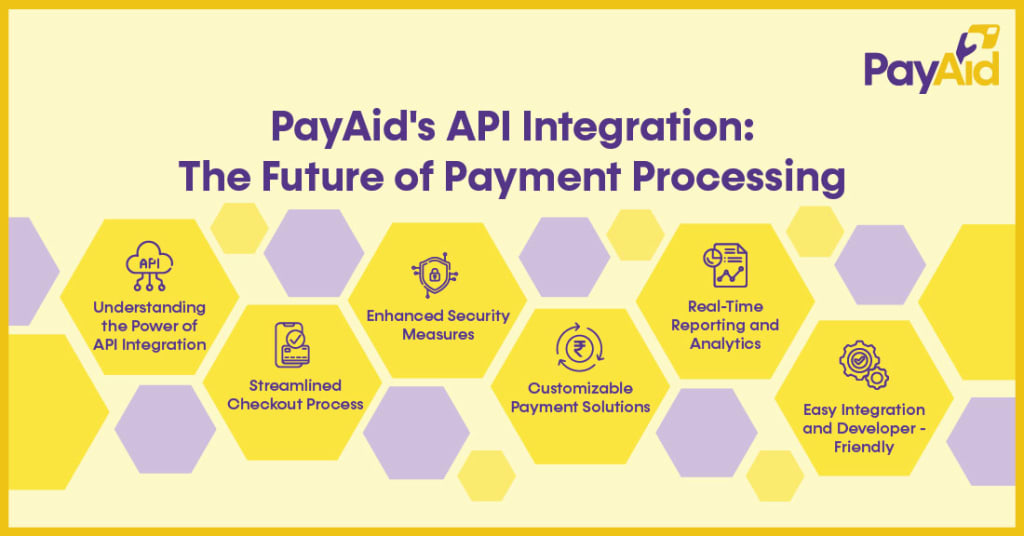How to Seamlessly Integrate Payment Gateway APIs for Efficient Online Transactions?
Learn how to seamlessly integrate Payment Gateway APIs for efficient online transactions. Discover the significance of API integration, steps to choose the right gateway, setting up API credentials, ensuring security, and optimizing user experience.

In today's digital era, online transactions have become an integral part of our lives. Whether it's purchasing products, paying bills, or subscribing to services, having a smooth and efficient payment process is crucial for businesses and customers alike. Payment Gateway APIs (Application Programming Interfaces) play a pivotal role in ensuring secure and seamless online transactions. In this article, we will explore the concept of Payment Gateway APIs and provide step-by-step insights on how to integrate them effectively to enhance the efficiency of online transactions.
Introduction to Payment Gateway APIs
Payment Gateway APIs act as intermediaries between online merchants and financial institutions. They facilitate secure and encrypted communication for processing payments, ensuring that sensitive customer data is transmitted safely. Payment Gateway APIs enable businesses to accept a variety of payment methods, including credit and debit cards, digital wallets, and bank transfers.
The Importance of Efficient Payment Integration
Efficient payment integration is crucial for businesses to provide a seamless and hassle-free shopping experience to customers. A poorly integrated payment gateway can lead to abandoned carts, frustrated customers, and potential security vulnerabilities. Ensuring a smooth payment process boosts customer trust and encourages repeat transactions.
Understanding the Basics of API Integration
API integration involves connecting different software systems to allow them to communicate and share data. Payment Gateway API integration requires developers to incorporate the payment gateway's code into their website's checkout process. This allows real-time authorization and processing of transactions.
Step-by-Step Guide to Integrating Payment Gateway APIs
Selecting the Right Payment Gateway
Choosing a suitable payment gateway is the first step. Consider factors like supported payment methods, transaction fees, security features, and developer documentation.
Setting Up API Credentials
Once you've chosen a payment gateway, obtain API credentials (such as API keys and authentication tokens) from the gateway provider. These credentials will be used to authenticate your website's communication with the payment gateway.
Integrating the API into Your Website
Integrate the API by adding the necessary code to your website's checkout page. Most payment gateways provide SDKs and plugins for popular e-commerce platforms, simplifying the integration process.
Implementing Secure Authentication
Ensure that the API integration includes strong authentication mechanisms. This prevents unauthorized access to sensitive customer data and enhances overall security.
Handling Transaction Responses
Develop error-handling mechanisms to manage various transaction outcomes, such as successful payments, declined transactions, and payment errors. Provide clear and user-friendly error messages.
Testing the Integration
Before going live, thoroughly test the payment gateway integration using sandbox or test environments. This helps identify and resolve any issues before real transactions take place.
Ensuring Security in Payment Transactions
Data Encryption
Encrypt customer data during transmission to protect it from unauthorized interception. Utilize SSL (Secure Socket Layer) certificates to establish a secure connection between your website and the payment gateway.
PCI DSS Compliance
Adhere to Payment Card Industry Data Security Standard (PCI DSS) requirements. Compliance ensures that your business follows best practices to safeguard customer cardholder data.
Two-Factor Authentication
Implement two-factor authentication for customer accounts. This adds an extra layer of security by requiring customers to provide a second form of verification in addition to their password.
Optimizing User Experience
Mobile Responsiveness
Ensure that your payment gateway integration is mobile-responsive. A significant portion of online transactions occurs through mobile devices.
Minimalistic Checkout
Simplify the checkout process by minimizing the number of steps and information fields required. A clutter-free checkout page reduces cart abandonment rates.
Multiple Payment Options
Offer a variety of payment methods to cater to diverse customer preferences. Include credit and debit cards, digital wallets, and other emerging payment options.
Troubleshooting Common Integration Issues
API Errors and Solutions
Regularly monitor API logs for errors. Common issues include incorrect API credentials, server downtime, and communication failures. Refer to the gateway's documentation for troubleshooting guidance.
Compatibility and Browser Issues
Test your payment gateway integration across different browsers and devices. Compatibility issues can arise due to varying browser behaviors and device specifications.
The Future of Payment Gateway APIs
As technology continues to evolve, payment gateway APIs will likely become even more sophisticated. With advancements in biometric authentication, AI-driven fraud detection, and IoT-enabled payments, the future holds exciting possibilities for enhancing online transaction efficiency.
Conclusion
Efficiently integrating Payment Gateway APIs is a pivotal step for businesses looking to provide a seamless online shopping experience. By following a well-structured integration process, ensuring security measures, and optimizing user experience, businesses can build customer trust and streamline their online transactions.
FAQs
Q: What is a Payment Gateway API?
A: A Payment Gateway API is a software interface that facilitates secure communication between online merchants and financial institutions, enabling smooth online transactions.
Q: How do I choose the right payment gateway for my business?
A: Consider factors like supported payment methods, transaction fees, security features, and developer documentation when selecting a payment gateway.
Q: Why is secure authentication important in API integration?
A: Secure authentication prevents unauthorized access to customer data and ensures the integrity of online transactions.
Q: What is PCI DSS compliance?
A: PCI DSS compliance refers to adhering to industry standards that ensure the secure handling of customer cardholder data during payment transactions.
Q: How can businesses prepare for the future of payment gateway APIs?
A: Businesses can stay ahead by embracing emerging technologies like biometric authentication, AI-driven fraud detection, and IoT-enabled payments.





Comments
There are no comments for this story
Be the first to respond and start the conversation.